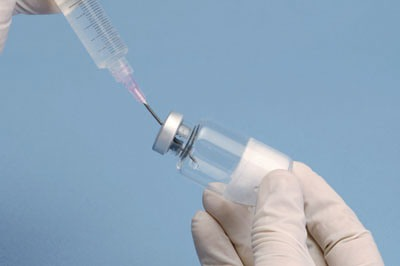Reliable Automated Visual Inspection Of Lyophilized Vials: A Comprehensive Overview

Table of Contents
Challenges of Manual Lyophilized Vial Inspection
Manual inspection of lyophilized vials, a labor-intensive process, is inherently prone to errors and inefficiencies. The reliance on human inspectors introduces several critical challenges:
Subjectivity and Human Error
Human inspectors, despite their best efforts, are susceptible to fatigue, leading to inconsistencies in their assessments. Subjectivity in interpreting defects also contributes to a higher error rate.
- High error rate: Manual inspections often miss subtle defects, leading to potentially flawed products reaching the market.
- Inconsistent results: Variations in individual inspector performance result in inconsistent quality assessments across batches.
- Slow process: Manual inspection is significantly slower than automated methods, creating bottlenecks in the production line.
- Increased labor costs: The high labor costs associated with manual inspection significantly impact overall production expenses.
- Difficulty in maintaining consistent standards: Ensuring consistent standards across multiple inspectors and shifts is difficult to achieve manually.
Bottlenecks in Production
The slow pace of manual inspection creates significant bottlenecks in the production process. This impacts not only throughput but also the overall efficiency and profitability of the manufacturing operation.
- Reduced throughput: The limited speed of manual inspection directly restricts the number of vials inspected per unit of time.
- Increased lead times: Bottlenecks lead to delays in the entire production process, extending lead times for product delivery.
- Impact on production scheduling: Delays caused by manual inspection disrupt production schedules and overall planning.
- Higher operational costs: The combination of slow throughput, increased labor costs, and potential for product recalls significantly increases operational costs.
Benefits of Automated Visual Inspection Systems for Lyophilized Vials
Automated visual inspection systems offer a compelling solution to the challenges of manual inspection, providing several significant advantages:
Enhanced Accuracy and Consistency
Automated systems eliminate the subjectivity and inconsistencies inherent in manual inspection. Sophisticated algorithms and high-resolution imaging ensure objective and consistent evaluation of each vial.
- Reduced false positives/negatives: Automated systems minimize both false positive and false negative results, improving the accuracy of defect detection.
- Consistent defect detection: The objective nature of automated systems ensures consistent identification of defects regardless of the inspector or time of day.
- Objective evaluation: Automated systems remove human bias, providing objective and impartial assessment of vial quality.
- Improved data analysis: Automated systems generate detailed data that can be analyzed to identify trends and improve production processes.
Increased Throughput and Efficiency
Automated visual inspection systems dramatically increase throughput and overall production efficiency. This translates to significant cost savings and faster time to market.
- Faster inspection times: Automated systems significantly reduce inspection time compared to manual methods, boosting overall throughput.
- Increased production capacity: Higher throughput enables increased production capacity without the need for additional labor.
- Reduced labor costs: Automation reduces reliance on manual labor, leading to significant cost savings.
- Improved ROI: The increased efficiency and reduced costs associated with automated systems result in a rapid return on investment.
Improved Data Management and Traceability
Automated systems generate detailed inspection reports, providing complete traceability and facilitating seamless compliance with regulatory requirements.
- Detailed inspection reports: Automated systems generate comprehensive reports containing detailed information about each inspected vial and identified defects.
- Improved data analysis: The data generated by these systems enables detailed analysis to identify and address potential quality issues.
- Enhanced traceability: Complete traceability throughout the manufacturing process is crucial for regulatory compliance and efficient recall management.
- Simplified compliance documentation: Automated systems simplify the process of generating the documentation needed for regulatory compliance.
Key Features of Advanced Automated Visual Inspection Systems
Advanced automated visual inspection systems incorporate cutting-edge technologies to ensure superior performance and compliance:
High-Resolution Imaging and Advanced Algorithms
The most advanced systems utilize high-resolution imaging and sophisticated algorithms to detect even the smallest defects, ensuring superior product quality.
- High-resolution cameras: High-resolution cameras capture detailed images of each vial, allowing for the detection of minute defects.
- Sophisticated image processing: Advanced image processing algorithms analyze the captured images to identify a wide range of defects.
- Advanced defect detection algorithms: These algorithms are designed to identify various types of defects, including particulate matter, cracks, and other imperfections.
- Customizable inspection parameters: Many systems allow for customization of inspection parameters to meet specific product and regulatory requirements.
Integration with Existing Production Lines
Seamless integration with existing production lines is crucial for efficient implementation and optimal workflow.
- Modular design: Many systems are designed with modularity in mind, allowing for easy integration into existing production lines.
- Flexible integration options: Systems are designed to be compatible with a wide range of vial sizes and types.
- Compatibility with various vial sizes and types: Adaptability to different vial configurations simplifies integration and reduces the need for significant modifications.
- Easy setup and operation: User-friendly interfaces and intuitive controls streamline setup and operation.
Regulatory Compliance and Validation
Compliance with relevant regulations (such as 21 CFR Part 11) and thorough system validation are critical for ensuring the integrity of the inspection process.
- 21 CFR Part 11 compliance: Ensuring compliance with 21 CFR Part 11 is essential for regulatory compliance in the pharmaceutical industry.
- Validation protocols: Rigorous validation protocols are necessary to demonstrate the accuracy and reliability of the automated system.
- Audit trails: Comprehensive audit trails are maintained to track all system activities and ensure data integrity.
- Data security: Robust data security measures are implemented to protect sensitive data and ensure compliance with regulatory requirements.
Conclusion
Implementing reliable automated visual inspection systems for lyophilized vials offers numerous advantages, including increased efficiency, improved accuracy, enhanced regulatory compliance, and reduced costs. By eliminating the limitations of manual inspection, these systems ensure superior product quality and help pharmaceutical manufacturers meet the stringent demands of the industry. Invest in reliable automated visual inspection to upgrade your lyophilized vial inspection process and ensure superior quality. Learn more about automated visual inspection solutions for lyophilized vials and take the next step towards a more efficient and compliant production process.

Featured Posts
-
 Bringing Back A Legend Lynx And The Ford Gt Restoration
May 11, 2025
Bringing Back A Legend Lynx And The Ford Gt Restoration
May 11, 2025 -
 Stock Market Today Trumps Tariff Threat And Uk Trade Deal Impact
May 11, 2025
Stock Market Today Trumps Tariff Threat And Uk Trade Deal Impact
May 11, 2025 -
 Bayern Munichs Bundesliga Triumph Muellers Farewell Home Win
May 11, 2025
Bayern Munichs Bundesliga Triumph Muellers Farewell Home Win
May 11, 2025 -
 Palou Edges Out Dixon In Thermal Club Warm Up Session
May 11, 2025
Palou Edges Out Dixon In Thermal Club Warm Up Session
May 11, 2025 -
 Gaza Under Siege Hunger Sickness And Crime Flourish Under Blockade
May 11, 2025
Gaza Under Siege Hunger Sickness And Crime Flourish Under Blockade
May 11, 2025
